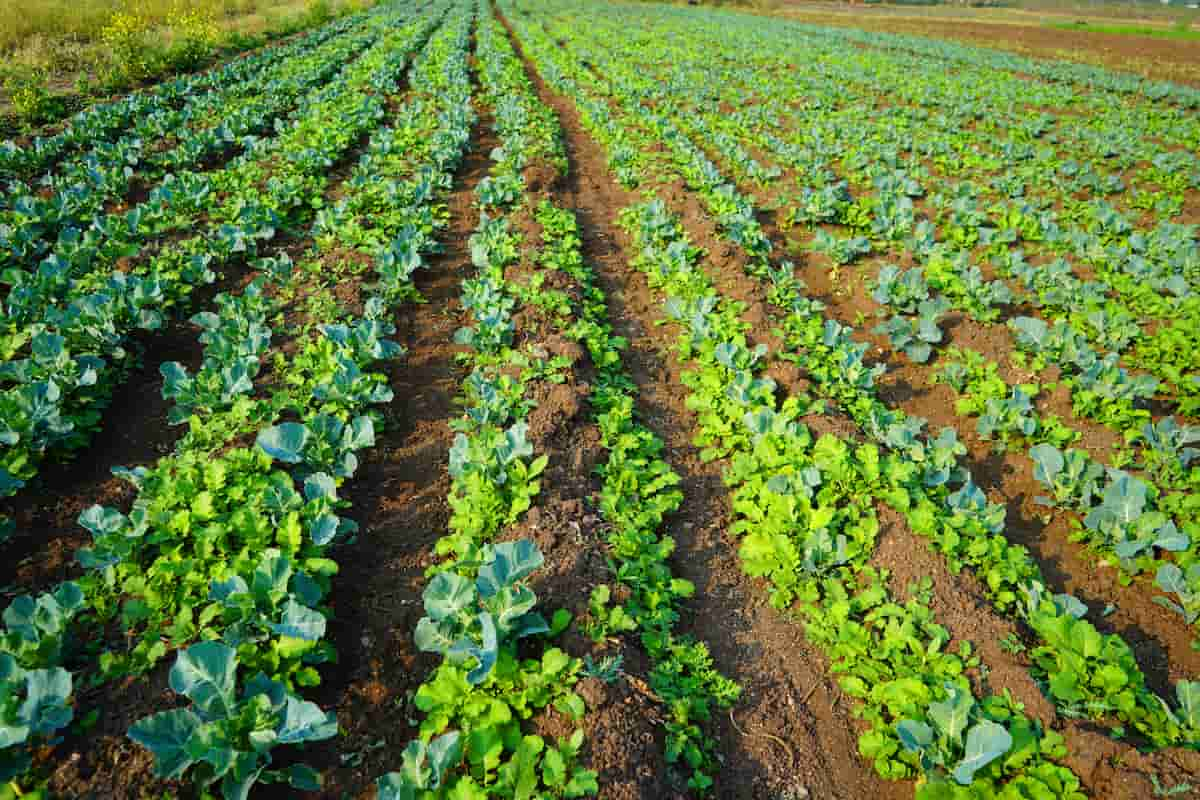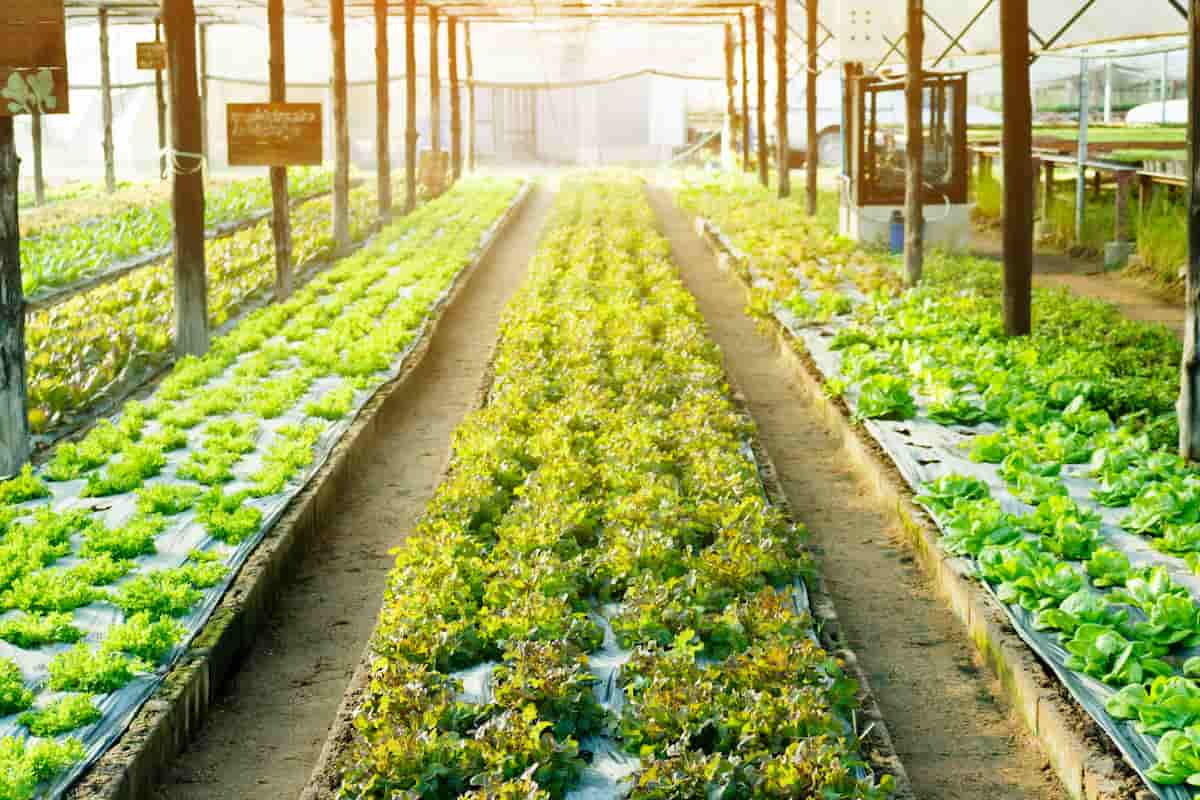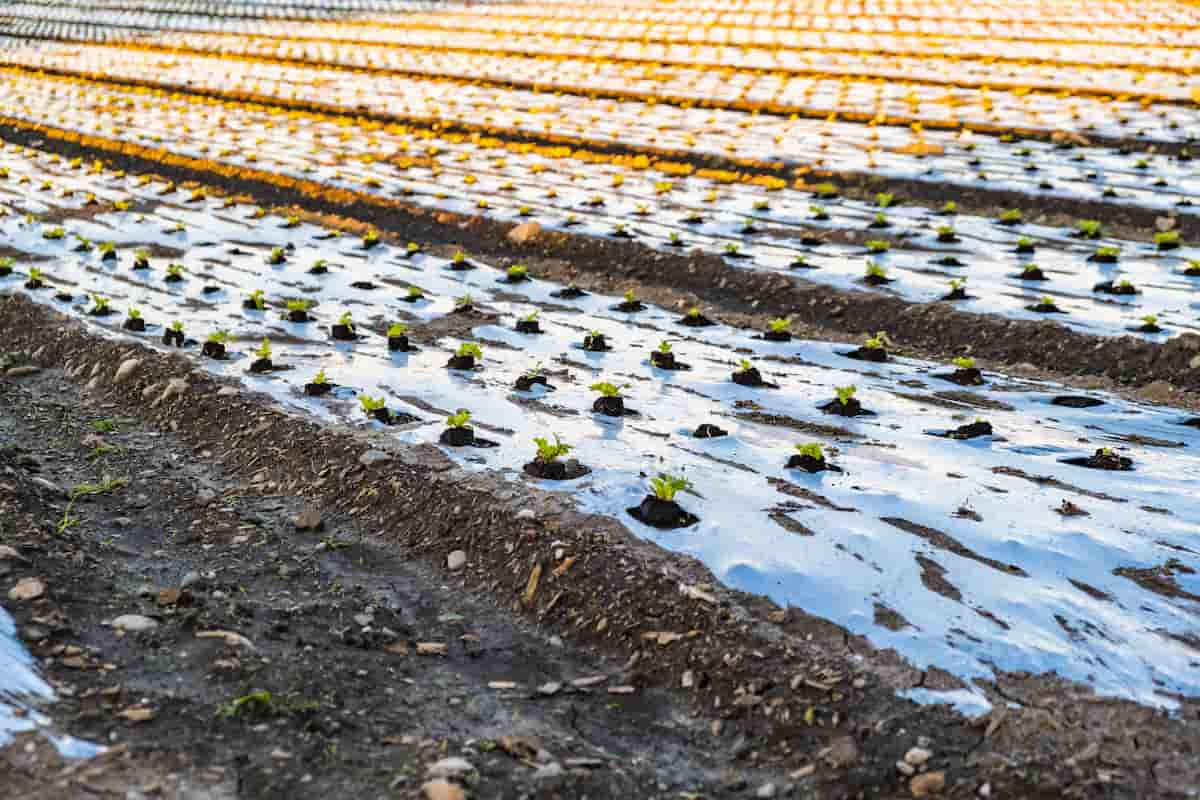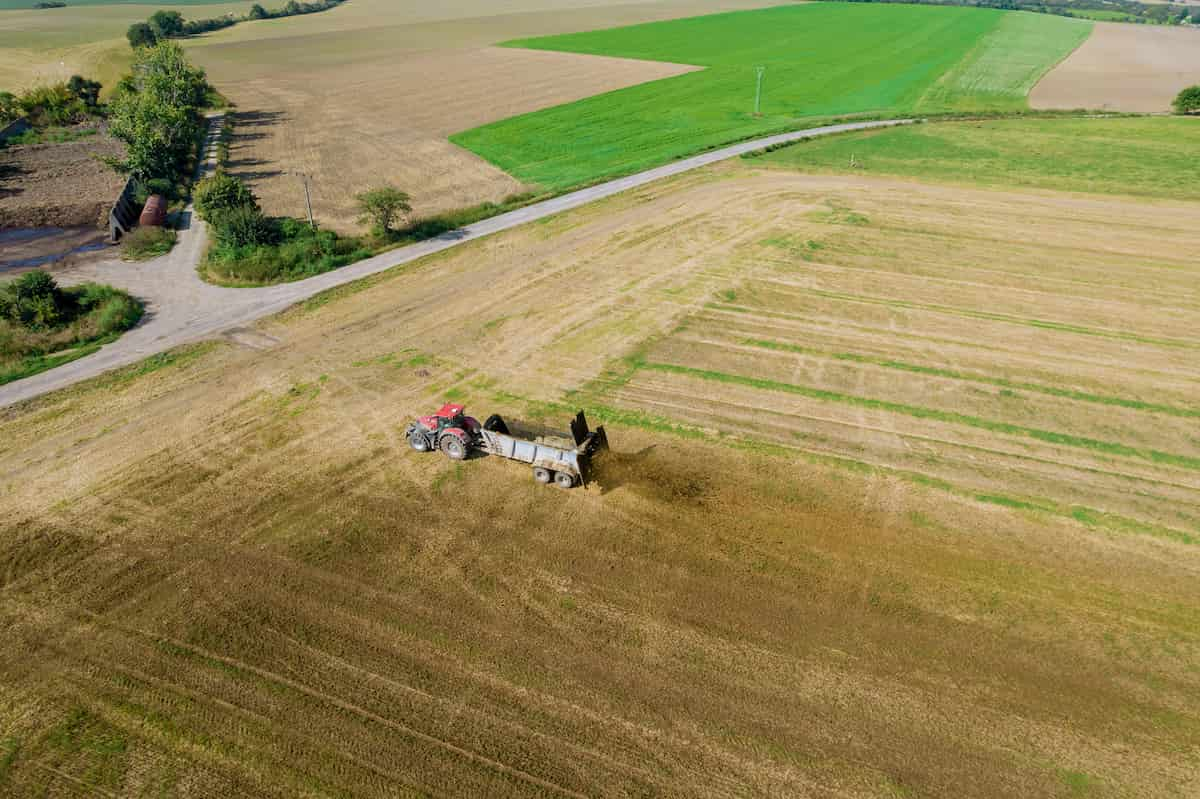Eco-Friendly Farming has been a growing interest in sustainable and environmentally responsible farming practices in recent years. Eco-friendly farming techniques are designed to promote the health of the soil, crops, and animals while minimizing negative environmental impacts. This article will explore 20 beginner-friendly eco-friendly farming techniques that can help reduce your carbon footprint, improve soil health, and grow healthy, nutritious produce.

20 Eco-Friendly Farming Techniques
What is Eco-Friendly Farming?
Eco-Friendly Farming, also known as sustainable or regenerative agriculture, is a farming practice that prioritizes environmental stewardship, social responsibility, and economic viability. It involves farming techniques that promote soil health, conserve water, protects biodiversity, and reduce synthetic inputs like pesticides and fertilizers. Eco-Friendly Farming seeks to create a balanced and resilient ecosystem in harmony with nature rather than relying on artificial inputs and practices that damage the environment and human health.
Eco-Friendly Farming techniques include crop rotation, cover cropping, natural fertilizers, and integrated pest management, which help maintain soil health and reduce the need for synthetic inputs. Other techniques like rainwater harvesting, drip irrigation, and mulching can help conserve water. Agroforestry, wildflower meadows, and animal waste management can promote biodiversity and improve soil health.
Why is Eco-friendly Agriculture Important?
- Sustainable farming methods benefit the environment, society, and the bottom line.
- Loss of habitat, deforestation, and species diversity may result from agricultural growth and unsustainable farming practices.
- Agriculture uses various substances, some extremely harmful to human and animal health, including pesticides, fertilizers, and herbicides.
- The cycle of poverty and biodiversity loss is perpetuated because the developed world overproduces crops due to subsidies, which compels producers in the developing world to cut environmental corners.
- About 69% of all fresh water on Earth is used in agriculture, which has serious consequences for both water availability and purity.
- Farming methods like burning fields and clearing land exacerbate greenhouse gases and climate change.
- Crop rotation, natural fertilizers, and integrated pest control are examples of sustainable agriculture practices that can lessen agriculture’s environmental toll and strengthen resilient food networks.
- Eco-friendly farming methods can improve environmental quality, human health, farmer incomes, and community food supplies.
In case you missed it: 15 Promising Sustainable Agriculture Practices: Every Farmer Should Know These

Soil Health
Soil health refers to the overall condition of the soil, including its physical, chemical, and biological properties. It is essential to maintain soil health to ensure the sustainability and productivity of agricultural lands.
- Soil health is critical for growing healthy crops, which can provide food, fiber, and fuel.
- Healthy soil contains a balanced mixture of organic matter, minerals, and microorganisms that work together to support plant growth.
- Soil health can be degraded by factors such as erosion, compaction, nutrient depletion, and the use of chemicals.
- Sustainable agricultural practices can help maintain and improve soil health, such as reducing tillage, rotating crops, and using cover crops.
- Monitoring soil health can help farmers make informed decisions about managing their land and identify potential issues before they become serious problems.
- Soil health is essential for agriculture and affects biodiversity, climate change, and water quality.
Composting
Composting is breaking down organic materials such as food waste, leaves, and yard trimmings into a nutrient-rich soil amendment that can improve soil health and fertility.
- Composting is a natural process miming how organic materials break down in nature.
- Composting involves mixing organic waste with water and air and providing conditions for microbes to break down the material.
- The result of composting is a dark, crumbly substance that is rich in nutrients and beneficial microorganisms.
- Composting has many benefits, including reducing the amount of organic waste sent to landfills, improving soil health and fertility, and reducing the need for synthetic fertilizers and pesticides.
- Composting can be done at home using a compost bin or pile or through commercial facilities that process organic waste on a larger scale.
Cover Crops
Cover crops are plants grown to protect and improve soil health, usually when the soil is left bare. They are grown to prevent erosion, suppress weeds, improve soil fertility, and enhance biodiversity.
- Cover crops are plants grown to improve soil health.
- They are planted during periods when the soil would otherwise be left bare.
- Cover crops cover soil from erosion and suppress weeds.
- They also improve soil fertility and enhance biodiversity.
- Cover crops are typically grown in between cash crop seasons or as an intercrop.
In case you missed it: How Vertical Farming Reduces the Carbon Footprint and Improves Sustainability

Crop Rotation
Crop rotation is a farming practice where different crops are planted in the same area sequentially. The objective is to improve soil fertility, controlling pests and diseases, and increasing crop yields.
- The practice dates back to ancient civilizations and is still widely used today.
- Crop rotation has many benefits, including improved soil health, reduced pest and disease pressure, and increased yields.
- There are many different crop rotation systems, such as simple rotation, complex rotation, and relay cropping.
- Simple rotation involves alternating between crops, while complex rotation involves more than two crops in a specific sequence.
- Relay cropping involves planting a second crop before the first one is harvested.
- Crop rotation requires careful planning to ensure suitable crops are grown sequentially to maximize the benefits.
Natural Fertilizers
Natural fertilizers are organic materials that provide nutrients to plants. These fertilizers are obtained from natural sources, such as animal waste, plant residues, and other organic matter.
- They are more environmentally friendly.
- They are cheaper and easier to obtain.
- They release nutrients slowly, providing long-lasting nourishment to plants.
- They improve soil health by adding organic matter.
- They do not cause soil acidity.
Natural fertilizers include compost, animal manure, bone meal, and blood meal. Compost combines organic matter such as food scraps and leaves, while animal manure is a rich nitrogen, phosphorus, and potassium source. Blood meal is made of dried animal blood and is high in nitrogen, while the bone meal is made from crushed animal bones.
Pest and Disease Control
Pest and disease control is the management of pests (organisms that cause damage or disease to plants or animals) and diseases that affect crops and animals.
- Pests can include insects, rodents, other animals that damage crops or spread disease, and weeds that compete with crops for resources.
- Diseases caused by bacteria, viruses, fungi, or other organisms that infect plants or animals and cause harm or death.
- Integrated Pest Management (IPM) is a holistic approach to pest and disease control that combines cultural, biological, and chemical control methods.
- Cultural control involves crop rotation, pruning, and sanitation practices to reduce pest and disease pressure.
- Biological control uses natural enemies of pests, such as predators, parasites, or pathogens, to control their populations.
- Chemical control uses pesticides or other chemicals to kill or repel pests and disease-causing organisms.
- Sustainable pest and disease control aims to minimize chemical pesticides using non-chemical methods while protecting crops and animals from damage and disease.
In case you missed it: Orchid Farming Business Plan: Strategic Changes for Increased Profitability

Companion Planting
Companion planting is a technique used in agriculture and gardening where different crops are grown together for mutual benefits. It is based on the concept that certain plants can help or hinder other plants’ growth. The practice involves selecting plants that positively influence each other when planted close. Companion planting has been used for centuries to maximize yields, improve soil health, control pests, and diseases, and enhance the overall biodiversity of the garden.
- Planting marigolds alongside tomatoes to repel harmful insects
- Growing beans with corn, as beans fix nitrogen in the soil, which corn needs to grow
- Planting basil with tomatoes to improve the flavor of the tomatoes
- Growing radishes with carrots to deter carrot flies.
Natural Predators
Natural predators are living organisms that hunt, kill, and consume other organisms as their food source.
- Natural predators, such as birds, mammals, reptiles, and insects, can be found in various forms.
- They help regulate prey species’ populations, preventing them from overrunning an ecosystem.
- Natural predators are an essential part of the food chain and contribute to the health of ecosystems.
- They often have physical adaptations and behaviors, such as sharp nails or stealthy movements, making them effective hunters.
- Natural predators can also have a symbiotic relationship with their prey, where both species benefit from the interaction.
- However, removing natural predators from an ecosystem can lead to imbalances and negative consequences, such as an increase in the population of pests or invasive species.
- In agriculture, natural predators are sometimes used as a biological control to manage pest populations without pesticides.
Water Conservation
- Water conservation in agriculture includes using irrigation systems that minimize water waste, planting crops suitable for local water availability, and implementing practices that retain soil moisture.
- Precision farming technologies such as soil moisture sensors, weather stations, and crop modeling can help farmers optimize their water use.
- Conservation practices, like crop rotation and cover cropping, can improve soil health and increase water retention.
Drip Irrigation
Drip irrigation is an advanced irrigation system used in agriculture to water plants by dripping water onto the roots of the plants.
- Drip irrigation is an efficient irrigation technique where water is supplied to plants slowly and precisely through small emitters near the plant roots.
- This system is widely used in agriculture, especially in areas where water is scarce, as it helps to conserve water and reduce water wastage.
- Unlike traditional irrigation methods, drip irrigation can deliver water directly to the plant’s roots, which helps minimize water loss due to evaporation and run-off.
- By providing water directly to the root zone, drip irrigation ensures that plants receive the required amount of water and nutrients, which can result in healthier plants and higher yields.
- Drip irrigation can be used with various crops, including vegetables, fruits, flowers, and trees, and can be adapted to suit different soil types and terrains.
- This irrigation method can also reduce the spread of diseases and pests, as water is not sprayed onto the leaves and foliage of the plants, which can create a damp environment for pathogens to thrive.
In case you missed it: Government Subsidy for Biofloc Fish Farming in India

Rainwater Harvesting
Rainwater harvesting is collecting and storing rainwater for later use rather than letting it flow into the ground. It is an effective water conservation method and can provide a sustainable water source for irrigation, domestic use, and other purposes. The process involves the collection of rainwater from rooftops, catchments, or any other surface where rainwater falls and storing it in tanks or underground reservoirs. The collected water is then treated and filtered to make it safe for consumption. Rainwater harvesting can help reduce the demand for freshwater sources, which are becoming scarce due to population growth and climate change.
Mulching
Mulching covers the soil surface with organic material to improve soil health and plant growth. Mulching conserves soil moisture, suppresses weed growth, regulates soil temperature, and provides nutrients to the soil. It creates a physical barrier that reduces water evaporation from the soil and prevents weed seeds from germinating. Additionally, mulching helps to regulate soil temperature, which creates a more favorable environment for plant growth. As the organic matter decomposes, it releases nutrients into the soil and improves soil structure.
Biodiversity
Earth’s variation in life is called biodiversity. It contains species size, abundance, distribution, genetic diversity, and ecosystem variety. Biodiversity offers ecological benefits like nutrient cycling, soil formation, and pest control, which humans need to survive. It regulates Earth’s climate and keeps habitats stable and resilient.
Habitat loss, climate change, pollution, overexploitation, and alien species can harm biodiversity. Many nations have created national parks and wildlife reserves to protect ecosystems and their inhabitants. Sustainable agriculture, forestry, and other practices are being promoted to limit biodiversity loss.
Agroforestry
Agroforestry is a eco-friendly land management system that integrates trees, crops, and livestock on the same plot of land.
- Agroforestry combines the benefits of trees and other crops to create a more diverse and resilient agricultural system.
- Trees can provide multiple benefits, such as nutrient cycling, erosion control, and water regulation.
- Agroforestry can enhance biodiversity, soil health, and carbon sequestration, making it an important tool for mitigating climate change.
- Different agroforestry systems include alley cropping, silvopasture, and forest farming.
- Agroforestry can benefit farmers economically by producing timber, fruits, nuts, and other non-timber forest products.
Wildflower Meadows
- Wildflower meadows are areas of land intentionally planted with a mix of wildflowers to support biodiversity and provide habitat for pollinators.
- They can be created in gardens, parks, and larger land areas.
- They benefit pollinators, such as bees, butterflies, and other wildlife.
In case you missed it: How to Unlock Key Technologies to Improve Food Security: Reduce Pesticide Use and Enhance Crop Climate-Resilience

Hedge Planting
- Hedge planting involves creating a row of shrubs or small trees to create a natural boundary or screen.
- It can define property lines, provide privacy, and attract wildlife.
- It is important to choose the right species of plants for the local environment and to maintain the hedge regularly to ensure it remains healthy.
Beekeeping
- Beekeeping involves the raising and caring of honey bees to harvest honey and other products.
- It can be done on a small or large scale and supports pollination and biodiversity.
- Beekeepers need to understand the needs of their bees, manage pests and diseases, and maintain their hives regularly to ensure healthy colonies.
Livestock Management
Livestock Management refers to caring for domesticated animals, including feeding, breeding, and disease control.
- Livestock management involves properly caring for and handling animals, such as cattle, goats, sheep pigs, and chickens.
- It includes feeding, breeding, housing, and disease prevention and treatment.
- Proper livestock management practices can help ensure animal health and productivity and reduce environmental impacts.
- Livestock managers must understand animal behavior, nutrition, genetics, health, and business and financial management skills.
Animal Waste Management
Animal waste management is properly handling and disposing of animal waste to prevent negative environmental and public health impacts.
- Animal waste management involves collecting, storing, treating, and disposing waste from livestock, poultry, and other animals.
- Improper animal waste management can lead to soil and water pollution and the spread of diseases.
- Techniques such as composting, land application, and anaerobic digestion can be used to manage animal waste.
Conclusion
Incorporating eco-friendly farming techniques benefits the environment but also helps improve crop yields and reduces costs. By implementing these techniques, beginners can positively impact the planet and their farms.
- Types of Pesticides Used in Agriculture: A Beginner’s Guide
- Economical Aquaculture: A Guide to Low-Budget Fish Farming
- 15 Common Planting Errors That Can Doom Your Fruit Trees
- How to Make Houseplants Bushy: Effective Tips and Ideas
- Innovative Strategies for Boosting Coconut Pollination and Yield
- Pollination Strategies for Maximum Pumpkin Yield
- The Complete Guide to Chicken Fattening: Strategies for Maximum Growth
- Natural Solutions for Tulip Problems: 100% Effective Remedies for Leaf and Bulb-Related Issues
- Revolutionizing Citrus Preservation: Towards a Healthier, Greener Future
- Natural Solutions for Peony Leaf and Flower Problems: 100% Effective Remedies
- Maximizing Profits with Avocado Contract Farming in India: A Comprehensive Guide
- Natural Solutions for Hydrangea Problems: 100% Effective Remedies for Leaf and Flowers
- The Ultimate Guide to Choosing the Perfect Foliage Friend: Bringing Life Indoors
- From Sunlight to Sustainability: 15 Ways to Use Solar Technology in Agriculture
- The Ultimate Guide to Dong Tao Chicken: Exploring from History to Raising
- The Eco-Friendly Makeover: How to Convert Your Unused Swimming Pool into a Fish Pond
- Mastering the Art of Delaware Chicken Farming: Essentials for Healthy Backyard Flocks
- 20 Best Homemade Fertilizers for Money Plant: DIY Recipes and Application Methods
- How to Craft a Comprehensive Free-Range Chicken Farming Business Plan
- Brighten Your Flock: Raising Easter Egger Chickens for Beauty and Bounty
- How to Optimize Your Poultry Egg Farm Business Plan with These Strategies
- Subsidy for Spirulina Cultivation: How Indian Government Schemes Encouraging Spirulina Farmers
- Ultimate Guide to Raising Dominique Chickens: Breeding, Feeding, Egg-Production, and Care
- Mastering the Art of Raising Jersey Giant Chickens: Care, Feeding, and More
- Ultimate Guide to Raising Legbar Chickens: Breeding, Farming Practices, Diet, Egg-Production
- How to Raise Welsummer Chickens: A Comprehensive Guide for Beginners
- How to Protect Indoor Plants in Winter: A Comprehensive Guide
- Ultimate Guide to Grow Bag Gardening: Tips, Tricks, and Planting Ideas for Urban Gardeners
- Guide to Lotus Cultivation: How to Propagate, Plant, Grow, Care, Cost, and Profit
- Agriculture Drone Subsidy Scheme: Government Kisan Subsidy, License, and How to Apply Online
- Ultimate Guide to Raising Araucana Chickens: Breed Profile, Farming Economics, Diet, and Care
- Bringing Hydroponics to Classroom: Importance, Benefits of Learning for School Students
- Ultimate Guide to Raising Polish Chickens: Breed Profile, Farming Economics, Diet, and Care
- Ultimate Guide to Raising Australorp Chickens: Profile, Farming Economics, Egg Production, Diet, and Care
- Silkie Chicken Farming: Raising Practices, Varieties, Egg Production, Diet, and Care
- Sussex Chicken Farming: Raising Practices, Varieties, Egg Production, Diet and Care